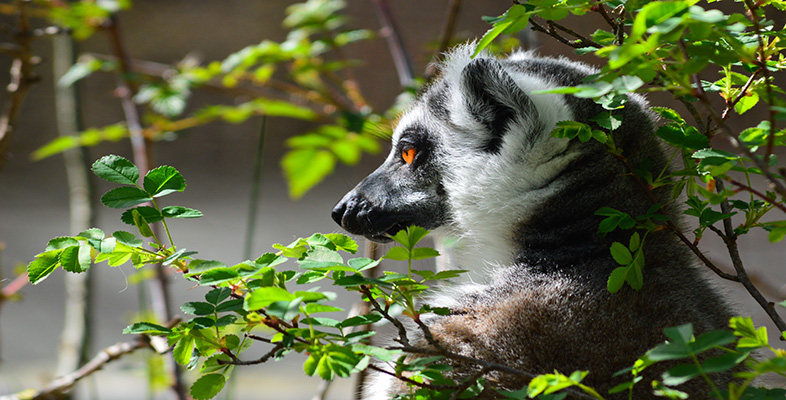5.2 Madagascan diversity
Activity 7
Watch the video sequence below, which focuses on just three lemur species - the ring-tailed (in a very brief sequence, leaping from one tree to another), the golden bamboo lemur, already mentioned, and the sifaka, plus the fossa. (a) Write down in about three sentences your preliminary observations on the differences in lifestyle and means of locomotion between these lemurs. You may find it useful to reread LoM pp. 234-241. (b) How would you classify the fossa, in taxonomic terms and by feeding habit? Has anything like it been mentioned so far in this course?
Answer
(a) Ring-tailed lemurs are accomplished tree-dwellers, clearly able to leap from tree to tree. The golden bamboo lemur is distinguished by its remarkably specialised (and toxic) diet; it is clearly able to cling to the thick stems of bamboo. The sifaka's form of locomotion (along with that of the indri) is highly specialised - an athletic leaping - and a distinctive balletic style of movement on the ground.
(b) The fossa is a carnivore and is unique to Madagascar; it preys on lemurs - the clue was in the video commentary, where the mammal was described as a 'kind of giant mongoose'. It's a civet - a member of the family Viverridae. It therefore belongs in the same group as the binturong, mentioned in Section 1 and LoM p. 215, but is very different from it in lifestyle. The binturong is a frugivore and 'moves in a very leisurely way'. Looked at superficially, the fossa more obviously resembles a large cat - equally at home in trees and on the ground. Over many millions of years, the fossa's isolation from other carnivores and its life within this distinctive fauna has meant that this civet has followed a unique evolutionary track.
DA's description indicates the great range of behaviours and habits in lemurs; I want to add a few more points. Refer back to Figure 2 at intervals for more information on the affiliations of each of the lemurs mentioned.
